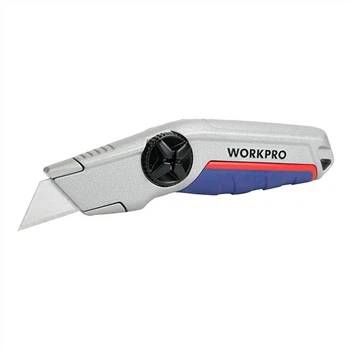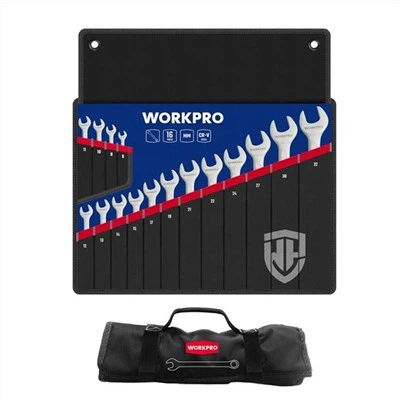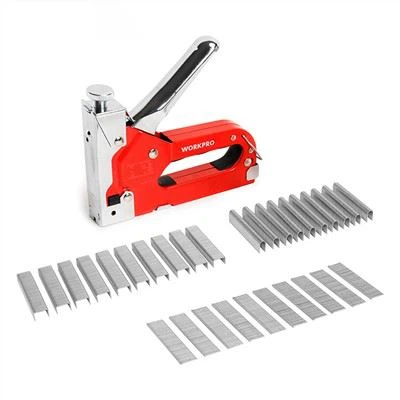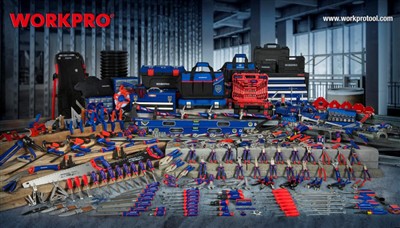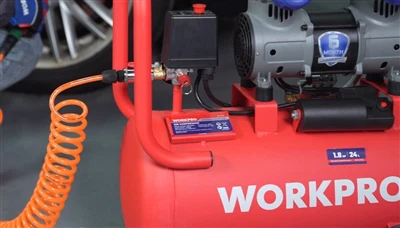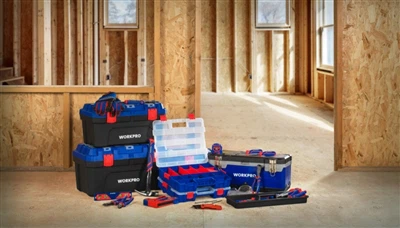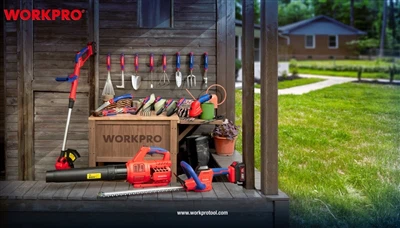Introduction: A demolition hammer is a powerful and essential tool for breaking through tough materials like concrete, brick, and stone. Whether you are a professional contractor or a DIY enthusiast, selecting the right demolition hammer is crucial for getting the job done efficiently and effectively. In this blog, we will walk you through the key factors to consider when choosing a 1500W demolition hammer.

Click for more: WORKPRO 1500W DEMOLITION HAMMER
1. Power and Wattage: The wattage of a demolition hammer determines its power output. A 1500W demolition hammer offers a good balance between portability and performance. It can handle most medium to heavy-duty demolition tasks. Make sure the hammer you choose has a consistent and reliable power supply to avoid interruptions during your work.
2. Impact Rate and Impact Energy: The impact rate refers to the number of blows the hammer delivers per minute. Look for a demolition hammer with a higher impact rate, as it indicates faster material removal. The impact energy is the force generated with each blow. A higher impact energy ensures efficient demolition, especially for stubborn materials.

3. Weight and Ergonomics: Since demolition work can be physically demanding, consider the weight and ergonomics of the tool. A lighter and well-balanced demolition hammer will reduce fatigue and strain during prolonged use. Check for features like rubberized handles and anti-vibration technology to improve comfort and control.
4. Attachments and Accessories: Many demolition hammers come with interchangeable attachments to adapt to different tasks. Common attachments include pointed chisels, flat chisels, and spade chisels. Having a variety of attachments allows you to tackle various demolition projects with a single tool.
5. Safety Features: Safety should always be a priority when working with powerful tools. Look for demolition hammers with safety features such as a trigger lock to prevent accidental startups, overload protection to safeguard the motor, and a sturdy housing to protect the user from debris.

6. Durability and Build Quality: A demolition hammer needs to withstand tough conditions, so opt for a model made from high-quality materials and durable components. Read customer reviews and research the brand's reputation for reliability to ensure the tool can withstand heavy use.
7. Corded vs. Cordless: Demolition hammers are available in both corded and cordless models. Corded hammers provide a consistent power supply but may restrict mobility. On the other hand, cordless models offer better portability but may have limited battery life. Choose the type that best suits your specific needs and the nature of your projects.

8. Price and Warranty: Set a budget for your demolition hammer, but avoid compromising on quality for the sake of cost. Contrast the costs and specifications of various models that fall within your price range. Additionally, check for warranties that offer sufficient coverage to protect your investment.
HOW TO USE DEMOLITION HAMMER
Using a demolition hammer requires proper knowledge, safety precautions, and technique. Demolition hammers are powerful tools designed to break up concrete, masonry, or other hard materials. Here's a general guide on how to use a demolition hammer safely and effectively:

1. Safety first:
• Wear appropriate personal protective equipment (PPE), including safety goggles, ear protection, dust mask, gloves, and steel-toed boots.
• Make sure the tool is in good working condition and the power cord (if corded) is intact.
• Always inspect the chisel or point attachment for any damage or wear before use.
2. Choose the right attachment:
• Demolition hammers come with different attachments, such as chisels and points. Select the appropriate attachment for your specific job.
• Chisels are suitable for breaking up larger areas of concrete or masonry, while points are better for more precise and focused demolition work.
3. Secure the work area:
• Clear the work area of any obstructions, debris, or tripping hazards.
• If possible, cordon off the work area to prevent unauthorized access.
4. Positioning:
• Maintaining a firm stance with your feet spaced shoulder-width apart is the first step.
• Hold the demolition hammer with both hands, one hand on the front handle and the other on the side handle.
5. Technique:
• Start by holding the hammer slightly above the surface you want to break.
• Gradually lower the chisel or point to the surface and let the tool's weight do most of the work.
• Apply downward pressure while allowing the tool to bounce or jackhammer off the surface.
• Move the demolition hammer from side to side to widen the breaking area.
6. Work systematically:
• Avoid making deep or aggressive strikes right away, especially if you're breaking concrete or masonry in a controlled manner.
• Work in small, controlled sections, breaking up the material gradually.
• Keep the chisel or point perpendicular to the surface for optimal results.
7. Take breaks:
• Demolition work can be physically demanding. Take regular breaks to prevent fatigue and maintain focus on the task.
8. Shutting down:
• When finished using the demolition hammer, turn it off and unplug it (if corded) before changing attachments or performing any maintenance.

Remember, using a demolition hammer can be hazardous, so if you're not experienced with this tool or the job is extensive, it's best to hire a professional or seek guidance from someone experienced in handling such equipment. Safety should always be the top priority when working with powerful tools like demolition hammers.
Conclusion: Selecting the right 1500W demolition hammer involves careful consideration of power, impact rate, weight, safety features, and durability. By keeping these factors in mind and understanding your specific requirements, you can confidently choose a tool that will help you complete your demolition projects with ease and efficiency. Always follow the manufacturer's guidelines and safety instructions to ensure a safe and successful demolition experience. Happy demolishing!


